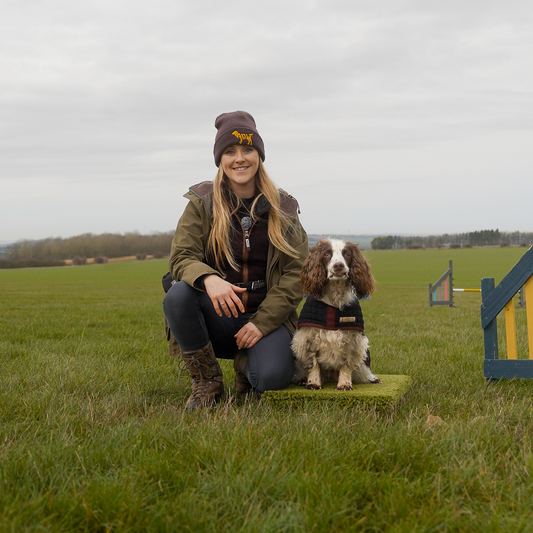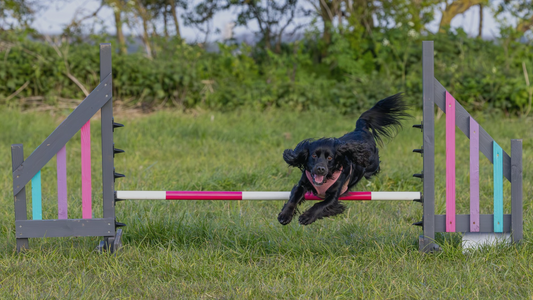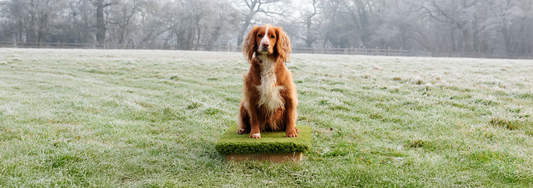How to Stop Your Dog Pulling on the Lead: A Step-by-Step Guide for Cambridge Dog Owners

Introduction: Why Does Your Dog Pull on the Lead?
If you're frustrated by your dog pulling on the lead, you're not alone! Many dogs, especially young or energetic ones, find walks so exciting that they forget their manners. But don’t worry—there’s a simple and effective way to train your dog to walk on a loose lead, reducing the strain on you and making walks more enjoyable for both of you.
In this guide, I’ll break down a straightforward training method that uses fixed points, reward-based learning, and patience. By focusing on quality over distance, you can teach your dog to walk calmly beside you.
Step-by-Step: How to Stop Your Dog Pulling on the Lead
Step 1: Settle Your Dog Between Two Fixed Points
The first step in loose lead walking is to choose two fixed points 10 or so paces apart, like trees, benches, lampposts or even natural markers on the ground. By walking between these points, you help your dog settle into a rhythm. This reduces the novelty of the walk and focuses their attention on you. The goal is to create a calm, controlled environment where they are less distracted.
Begin walking laps between your chosen points, and observe your dog’s behaviour. Watch for signs that they’re more focused on you and less distracted by their surroundings.
You’ll notice they’re ready for more training when they start:
- Pulling less,
- Jumping less, and
- Showing more focus and eye contact.
If your dog is still sniffing a lot or seems distracted, give them more time between the fixed points. It doesn't matter if it takes 3 circuits or 30, patience is key here!
TIP: Pick a side to walk your dog on that feels most comfortable for you
Whether it’s the left or the right. Consistency is important to avoid confusing your dog. Once you’ve chosen, place your treat pouch on that side for easy access.
For example, if you’re walking your dog on the right:
- Keep your treat pouch on your right side.
- Hold the lead and treats in your left hand.
- Use your right hand to feed your dog, keeping it close to their side for quick rewards.
Step 2: Add food rewards
Every time your dog walks beside you with a loose lead, give them a verbal cue like “good” and deliver a treat to their mouth. The key here is to reward specific positive behaviour by saying good when they're:
- Walking without pulling,
- Maintaining eye contact with you, and/or
- Staying beside your leg.
It’s important to deliver the treat in line with your leg, as this teaches your dog where they should position themselves during the walk.
Step 3: Gradually Increase Your Expectations
Once your dog is consistently walking well between the fixed points, you can begin to raise the training criteria. Try to aim for a 15-step circuit where your dog walks by your side on a loose lead for longer stretches.
With time and repetition, your dog will learn that the best place to be is right next to you. Remember to reward often, especially in the beginning. This builds their confidence and reinforces the behavior you want.
Why Quality Over Quantity Matters
You might be wondering: “If I spend time training like this, will my dog get enough exercise?” The answer is yes! Even if you’re not covering a lot of ground, your dog is getting plenty of mental stimulation from the training itself. In fact, 20 minutes of focused training can be just as valuable, if not more, than a 20-minute walk around the block where your dog is pulling.
My Recommended Tools for Loose Lead Walking
Having the right tools can make a huge difference in your training success. Here are my two top recommendations:
- Treat Pouch: I recommend this treat pouch because it’s big enough to fit your whole hand inside. This makes it easier to reward your dog quickly during training.
- Lead: I use this adjustable lead, which has a soft handle which is easy to hold and an adjustable length.
The 7-Day Loose Lead Challenge
For the next 7 days, challenge yourself to reward your dog for every moment they walk nicely beside you. Use their favourite treats, be consistent with your criteria and setup.
You’ll be surprised at how much progress you can make in a short time by focusing on the behaviours you want to see!
Conclusion: Patience is Key
Teaching your dog to walk on a loose lead takes time, but the rewards are worth it. Stay patient, use rewards generously, and remember to make each training session about quality over distance. With consistent effort, your dog will learn to walk by your side without pulling, making your walks much more enjoyable.
If you're in Cambridge and looking for more personalized help, feel free to book a one-on-one session with me here.






